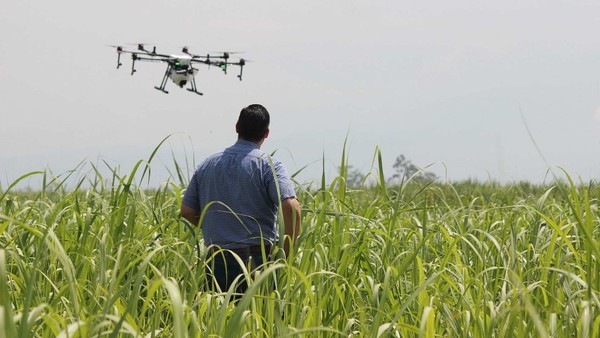PRECISION AGRICULTURE: WHAT ADVANTAGES DOES IT OFFER AND HOW CAN IT SUPPORT NORTH AFRICAN COUNTRIES?
Precision agriculture is based on advanced technologies, such as satellites and drones, which allow monitoring and optimization of crops while minimizing waste: a path towards sustainable growth, especially in areas severely affected by climate change.
According to FAO, the world population will reach 9 billion people by 2050, significantly increasing the demand for food.
However, if we consider scarcity, pollution and uneven distribution of water resources on a global level – in addition to numerous other variables related to climate change - growing more food with limited water availability could become increasingly difficult in the future.
In this scenario, precision farming offers a fundamental tool for planning a sustainable intensification of agricultural production, better managing variability in the field and increasing crop quality.

PRECISION AGRICULTURE: WHAT IT IS AND WHAT ADVANTAGES IT OFFERS
The term precision agriculture refers to a farming management strategy based on a series of innovative digital tools that allow farmers to carry out targeted agronomic interventions through the collection, processing and analysis of data collected in the field.
Thanks to this accurate monitoring system, it is possible to optimize agricultural practices, minimizing damage to the environment, reducing waste and maximizing yield. In practice, each plant is given what it needs in the right moment, thus obtaining greater environmental and economic sustainability.
Available for twenty years now, precision agriculture has only recently begun to spread more rapidly. This is due to various factors, including the need to make a series of initial investments - difficult for small farms to sustain - in addition to other obstacles such as the age of the machinery and the lack of internet connections in rural areas.
According to the latest Istat data, in Italy 28.5% of farms use precision agriculture tools and techniques, with a greater diffusion in the North-West (32.1%) and North-East (33%) areas, as well as among large farms, over 100 hectares (41.1%).
WHAT EQUIPMENT DOES PRECISION AGRICULTURE EMPLOY?
Precision agriculture is primarily based on remote monitoring of crops via satellites, drones and proximity sensors: it is thereby possible to monitor the state of the crops, through a series of indexes relating to the plants (vigor, hydric stress, quantity of chlorophyll, diseases, insect infestations) or to the soil (humidity, temperature), detecting the possible presence of vegetative stress.
>> discover the Environmental Monitoring and Earth Obersvation at Ecomondo <<
By being able to precisely identify the areas where these occur, it is then possible to define ad hoc cultivation operations - such as sowing, irrigation, fertilization and treatments - and apply the inputs in different areas of the field according to the needs of the crops. To this end, prescription maps are created and loaded onto tractors equipped with semi-automatic guidance systems (using GPS), which can move with greater precision than the operator.
Besides saving on seeds, fertilizers and plant protection products, this system allows to better trace food products, knowing where and how they were grown and what treatments they were subjected to.
THE OUTLOOK OF CROPS IN NORTH AFRICA
Precision farming tools and techniques offer an important perspective, even more so in geographical areas severely affected by climate change, such as North Africa. Here, increasing desertification makes it necessary to obtain productive results with as little water as possible.
Advanced technologies such as satellite monitoring, soil moisture sensors and crop management drones are a valuable resource for tackling this complex agricultural challenge. The adoption of precision agriculture is spreading in the region – even if unevenly - thanks also to the active support of international projects supporting small farmers.
Besides precision farming tools, other advanced solutions are being promoted: drip irrigation, which reduces water waste, improved seed varieties, which guarantee higher yields, mobile apps, which provide useful information on weather conditions in real time, and solar technologies, which improve energy availability.
Agriculture, including precision agriculture, is one of the key areas of intervention of the Mattei Plan for Africa, developed by the Italian government in 2024 and based on collaboration with companies, research centers and universities.
In the first phase, pilot projects are planned in various North African countries, namely Egypt, Tunisia and Algeria. Training initiatives are also planned to bridge the gap between traditional agriculture and modern technologies, with the aim of providing younger generations with tools and skills for multidisciplinary management of agricultural plots.
Article written by Emanuele Bompan & Maria Carla Rota
This Blog is an editorial project developed by Ecomondo with Materia Rinnovabile

